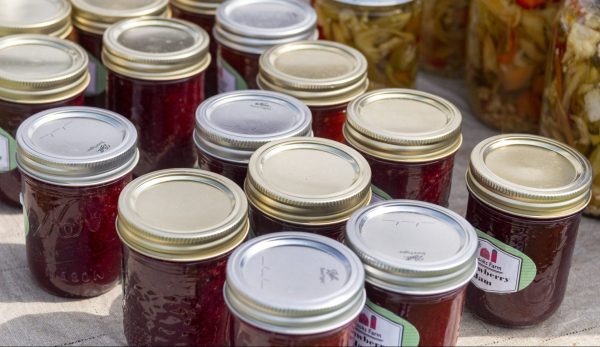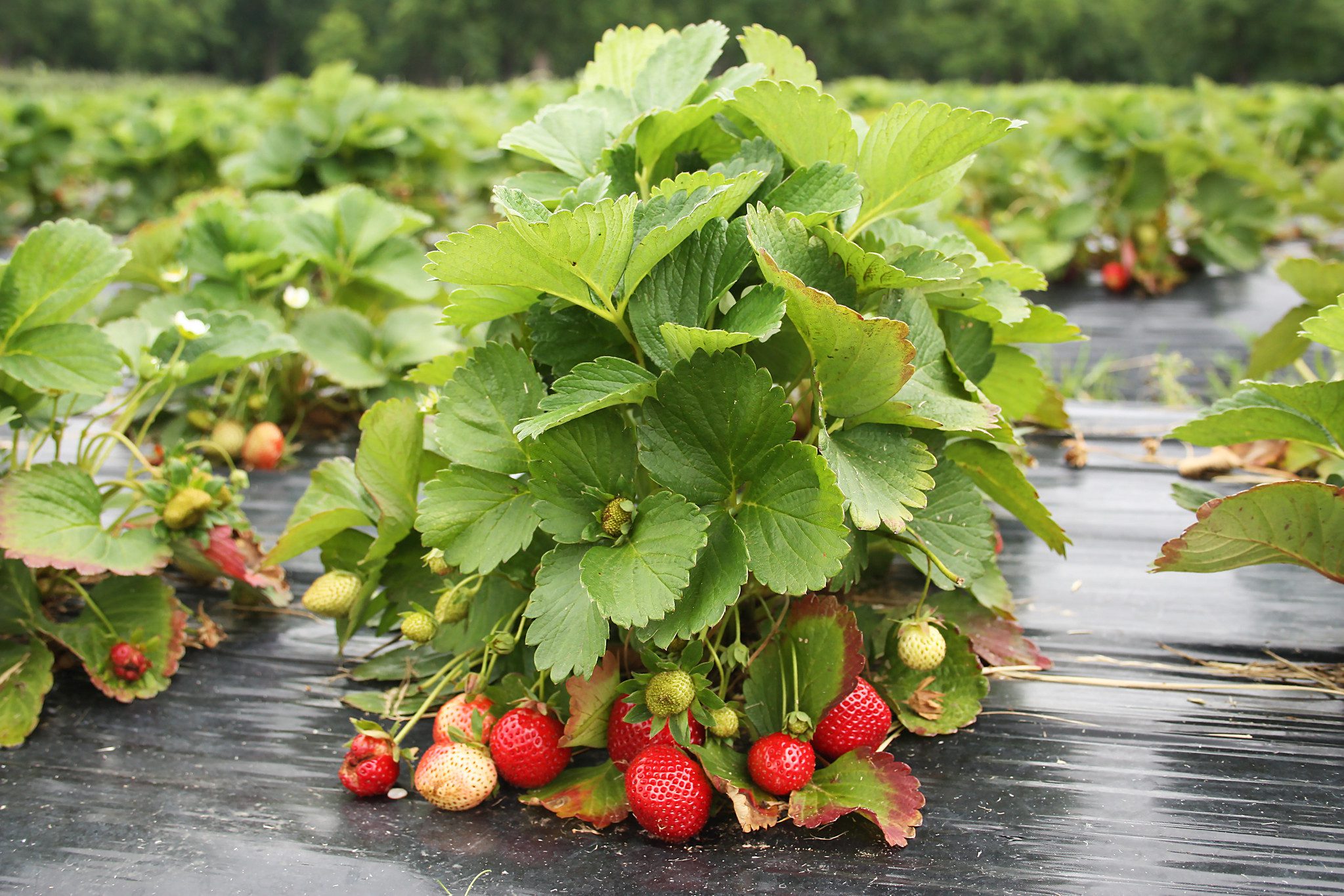Food Safety

Fresh, local strawberries are always a sweet treat. For many people in Alabama, there are U-pick farms or farmers markets nearby that have strawberries. After buying strawberries, there are a few measures to take to properly store and preserve their sweetness.
Storing
The first step to properly storing strawberries happens when purchasing them. Avoid buying fruits that are bruised, damaged, or moldy. Also, remember to wash your hands before and after handling fresh produce. Strawberries should be stored at about 40 °F. in a box with holes and covered with plastic wrap. You can also store them in in a plastic bag with holes. To prevent cross contamination in the refrigerator, keep the fruit away from raw meats. For quality, use soft, overripe berries immediately and discard any beery that is smashed or moldy.
Preserving
The following are yield measurements to remember when preserving strawberries:
- 1 qt. (1 1/2 lb.) = 4 cups
- 8-qt. crate (12 lb.) = 12 pt. (frozen)
- 24-qt. crate = 18 to 24 qt. (canned)
- 36 lb. (fresh) = 36 pt. (frozen)
- 2/3 qt. (fresh) = 1 pt. (frozen)
Freezing
Choose firm, ripe, and red berries that preferably have a slight tart flavor. Large berries are better sliced or crushed. Sort the berries and wash them in cold water, but do not soak them. Cap and drain well. There are four methods for freezing strawberries: syrup pack, sugar pack, unsweetened pack, and pectin pack. Using the syrup pack and sugar pack methods will produce higher-quality frozen strawberries than the unsweetened pack method will.
Syrup pack method. Pack the berries into containers and cover them with a cold, 50 percent syrup (1 part water to 1 part sugar), leaving a 1/2-in. headspace. Seal, label, date, and freeze the berries.
Sugar pack method. Add 1 part sugar to 6 parts strawberries and mix thoroughly. Put the berries into containers, leaving a 1/2-in. headspace. Seal, label, date, and freeze the berries.
Unsweetened pack method. Pack the berries into containers, leaving a 1/2-in. headspace. To ensure better color, cover with a 1 tsp. ascorbic acid to 1 qt. water mixture. Seal, label, and freeze the berries.
Pectin pack method. This alternative method uses pectin and less sugar than the syrup pack and sugar pack methods do. This method retains the fresh berry flavor, color, and texture. Follow the manufacturer’s directions on the box. Pack into freezer bags or containers, a leaving 1/2-in. headspace. Seal, label, date, and freeze the berries.
Canning
Strawberry Syrup
Makes 9 one-half pints of syrup.
- 6 1/2 cups of fresh or frozen berries
- 6 1/2 cups of sugar
Directions
If using fresh fruit, wash, cap, and stem the berries. If using frozen fruit, let the berries thaw.
Add the berries to a saucepan and crush them. Add the pan to heat. Bring the mixture to a boil then reduce to a simmer. Cook until the berries are soft (5 to 10 minutes). Strain the hot mixture through a colander and drain until cool enough to handle. Strain the collected juice through a double layer of cheesecloth or a jelly bag. The yield of the juice should be about 4 1/2 to 5 cups. Discard the dry pulp. In a large saucepan, combine the juice and sugar. Bring to a boil, reduce to a simmer, and cook for 1 minute. To make the syrup with whole fruit pieces, save 1 to 2 cups of the dry pulp and add it to the pan with the sugar and juice. Remove from the heat, skim off the foam, and fill clean, hot, one-half-pint jars, leaving a 1/2-in. headspace. Wipe the jar rims, adjust lids, and process in a boiling-water canner for 10 minutes.
This procedure can also be used with fresh or frozen blueberries, cherries, grapes, and raspberries.
 Low-Sugar Strawberry Jam
Low-Sugar Strawberry Jam
Makes 10 8-oz. jars.
- 6 2/3 crushed or chopped strawberries
- 1 2/3 cups unsweetened fruit juice or water
- 7 1/2 tbsp. low or no-sugar-needed pectin
- ½ t0 3 cups granulated sugar, sugar substitute, or honey
- ½ tsp. butter to prevent foaming (optional)
Directions
- Prepare the water bath canner, jars, and lids according to manufacturer’s instructions.
- Combine prepared fruit with fruit juice or water in a large saucepan. Gradually stir in the pectin. Add butter, if using. Over high heat, bring the mixture to a full, rolling boil that can’t be stirred down, stirring constantly.
- Add sugar, sugar substitute or honey. Return mixture to a full, rolling boil. Boil hard for 1 minute, stirring constantly. Remove from heat. Skim foam if necessary.
- Ladle the mixture into hot, clean canning jars. Place on the two-piece lids and tighten fingertip tight. Then, process in the water bath canner for 10 minutes. Remove from the canner and let set on a towel on the counter for 24 hours. Check the jars to ensure that they sealed. If they did not seal, put them in the refrigerator or reprocess in the canner. Rinse and clean the jars, label, and enjoy.
Remember, when making low-sugar jams and jellies, the shelf life is shorter because sugar acts as preservative of the color of the fruit. Full-sugar jams and jellies will last about 8 to 10 months on the shelf without turning. Low-sugar jams and jellies begin to turn after about 3 months. The best way to retain the bright red color is to do small batches of low-sugar jams and jellies. If you have an abundance of strawberries, freeze them to make jam or jellies in the future. In fact, frozen strawberries tend to make a sweeter jam.

